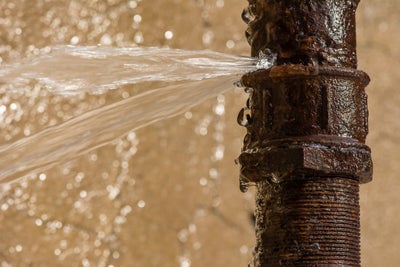6 Things to Know Before Putting Carpet in Your Basement

Carpeting or alternative flooring—what’s the ideal solution for a finished basement? This question sparks differing opinions among homeowners and buyers.
While some appreciate carpet’s warm, plush feel underfoot, others are deterred by its tendency to trap dirt, moisture, and stains, especially in previously occupied spaces.
We’ve compiled a list of things to consider before finishing your basement and installing carpeting, as well as how local basement waterproofing professionals can help in this journey.
Pre-Basement Carpeting Checklist: Consider These 6 Factors
Your basement space has unlimited potential, and what you do with it is up to you. Before truly making the area your own, it must be safe and dry. Here are 6 factors to consider:
1. Groundwater Can Pool Near Your Home

Improper drainage outside your home, including gutters, downspouts, and landscape grading, can cause water to collect nearby and leak into your basement. Diverting water away from the perimeter alleviates the strain on foundation walls and enhances the effectiveness of your waterproofing system.
Verify that your yard’s grading slopes away from the foundation, allowing water to drain away properly. Extend downspouts from gutters, and consider burying them underground to channel runoff at a greater distance.
2. Check Plumbing and HVAC to Avoid Leaks

Basements house vital systems and appliances, including water and sewer lines, plumbing pipes, HVAC units, water heaters, and washing machines. While this is convenient, it heightens the risk of potential leaks or flooding from compromised pipes, hoses, or equipment malfunctions.
Before considering basement carpeting, have professionals thoroughly inspect and verify the integrity of these systems. A single leak can lead to significant water damage. Proper preventative maintenance ensures your basement remains dry and suited for flooring upgrades.
3. Floor Cracks Are Pathways for Water Intrusion

Water’s powerful force can infiltrate basements through various entry points, including cracks in the concrete floor. When cracks are present in the floor, groundwater and excessive surface runoff from heavy rainfall events can easily seep through, potentially damaging anything in its path.
Carpeting and padding are particularly vulnerable, as moisture exposure can lead to foul odors, mold growth, and unhealthy conditions. Before installing basement carpeting, ensure that any existing floor cracks are properly repaired and sealed to prevent water leakage.
4. The Cove Joint is Another Vulnerable Area

In addition to floor cracks, water can also penetrate through the joint where basement walls intersect with the floor, known as the cove joint. This area often lacks a seamless bond between the separately poured concrete sections, creating a gap that water can quickly exploit and seep through.
To address this issue, investing in a robust interior drainage system designed to capture and channel water to a sump pump is essential.
5. Address Humidity and Moisture Before Adding Carpet

Homeowners must address moisture concerns before installing carpet due to the damp nature of basements. This includes installing an interior drainage system to capture water before it causes damage and adding a reliable sump pump to remove collected water and prevent damage to the basement carpet.
Preventing excessive moisture is crucial for a comprehensive basement waterproofing system. To control humidity levels and improve air quality in the basement and the rest of the house, add a vapor barrier to the walls and install an energy-efficient dehumidifier.
6. Select Suitable Basement Carpeting

Not all carpets are suitable for basement applications. Opt for synthetic fiber varieties like nylon or polyester, which offer breathability and quick-drying properties. Consider the intended use of your basement space to guide your choice of the most appropriate synthetic carpet material. Incorporating carpet padding is crucial for combating basement chill. Open-cell padding is preferable over closed-cell varieties, as the latter can trap moisture, increasing the risk of mold growth.
While color and design choices are a matter of personal preference, homeowners should prioritize these steps to create a dry and suitable environment for basement carpet.
FAQs
Basements are naturally prone to moisture due to their location below ground level. Groundwater seepage, humidity, and even minor leaks can create damp conditions. Carpet, being absorbent, soaks up this moisture leading to mold, mildew, and that musty basement smell.
Unfortunately, once mold takes hold in basement carpeting, removal and replacement are typically necessary. Drying the surface layer alone is ineffective, as mold can continue to thrive and spread beneath. To avoid this issue, prioritize waterproofing the basement before installing carpet. If mold is already present, it’s best to remove and replace the affected carpeting.
While handy homeowners can try basic measures, DIY solutions are often temporary and fail to address the root of the problem. Professional waterproofing companies like Groundworks have specialized equipment, products, and experience for reliable results.
Groundworks Can Protect Your Basement from Water Damage

No matter how you use your basement, it’s crucial to protect it from damage. Even a small amount of moisture to wreak havoc, but local professionals at Groundworks are prepared to help you repair and safeguard your basement.
Contact us today to schedule a free inspection and estimate with one of our experts. We’ll evaluate your basement’s condition and recommend solutions customized to meet your needs. We’ve served homeowners throughout Northern and Southern Albert for more than 30 years. Curious if we serve your area? Check out our locations page and give us a call!